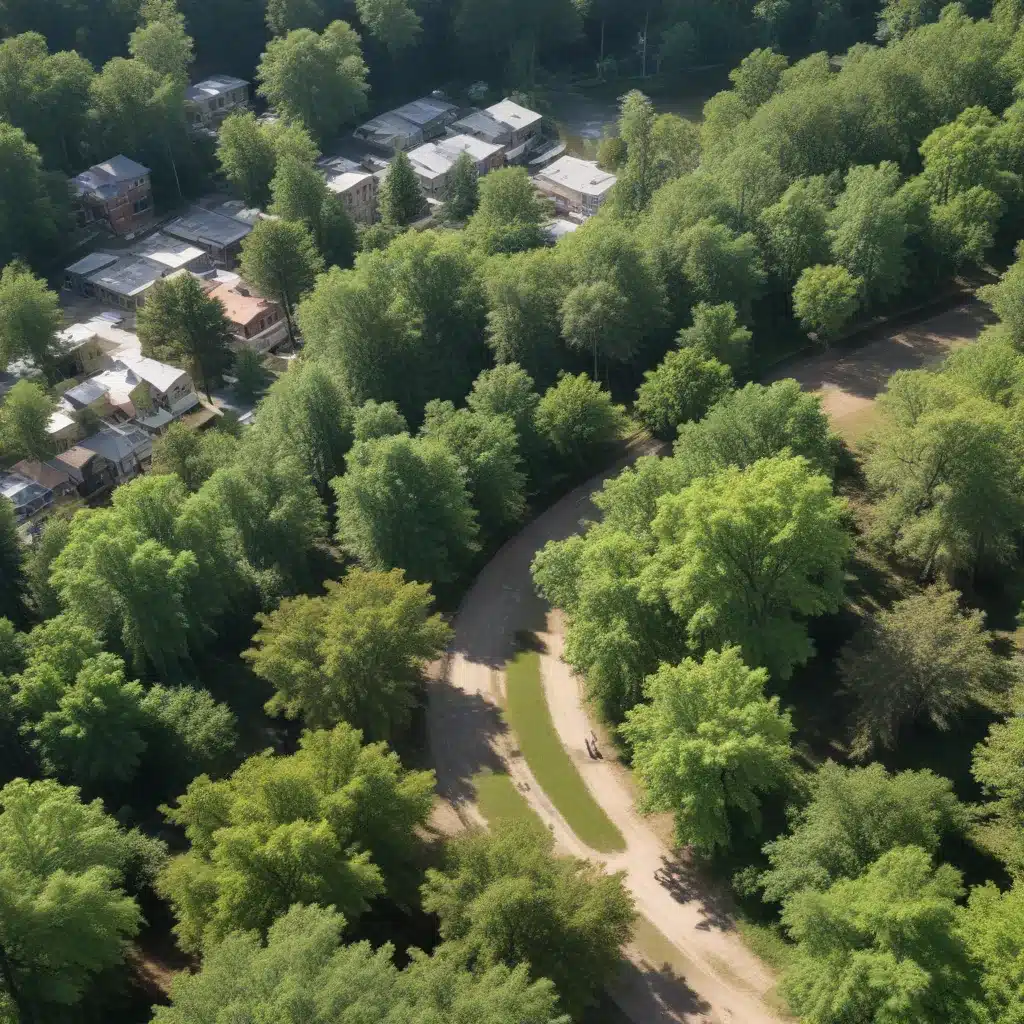
Climate change is profoundly altering the moisture dynamics of urban forests worldwide. As temperature and precipitation patterns shift, the delicate balance of soil moisture, evapotranspiration, and plant available water is being disrupted. This has far-reaching consequences for the health, function, and resilience of urban tree populations – the very green infrastructure that provides countless benefits to city dwellers.
Precipitation Patterns
Across many regions, climate projections indicate decreasing annual precipitation and more variable rainfall patterns, with both prolonged droughts and intense downpours becoming more commonplace (IPCC 2021). This can lead to soil moisture deficits that stress urban trees, leaving them vulnerable to disease, pests, and mortality. Paradoxically, the increased frequency of heavy rainfall events can also pose challenges, as saturated soils and flooding damage root systems and impair nutrient uptake.
Soil Moisture
Maintaining optimal soil moisture levels is critical for sustaining urban forest health. Soil texture, organic matter content, and depth all influence a site’s water-holding capacity and drainage characteristics. In drier climates, strategies like amending soil with compost or installing irrigation systems can help compensate for declining precipitation. Conversely, in areas prone to waterlogging, urban foresters may need to select drought-tolerant species or implement drainage improvements.
Evapotranspiration
As temperatures rise, evapotranspiration – the combined process of evaporation from soil and transpiration from plants – accelerates. This can deplete soil moisture reserves, especially during the hot, dry summer months when trees’ water demands peak. Monitoring evapotranspiration rates and adjusting irrigation schedules accordingly is key to preventing moisture stress in urban forests.
Ecosystem Functions
Urban forests provide invaluable ecosystem services, from mitigating the urban heat island effect to improving air quality and sequestering carbon. However, disruptions to moisture dynamics can impair these vital functions. Stressed trees become less effective at cooling the local environment, reducing their capacity to offset the impacts of climate change. Furthermore, drought-induced tree mortality can diminish the urban forest’s ability to filter pollutants and store atmospheric carbon.
Adaptation Strategies
To safeguard the long-term health and resilience of urban forests, a multi-faceted approach to climate change adaptation is required. This may involve:
- Species selection: Prioritizing drought-tolerant, water-efficient tree species that can thrive under projected climate conditions.
- Soil management: Improving soil structure and water-holding capacity through the addition of organic matter or the use of water-retaining amendments.
- Irrigation optimization: Deploying smart irrigation systems that adjust watering schedules based on real-time soil moisture and weather data.
- Diversification: Promoting a mix of tree species and age classes to increase the urban forest’s overall resilience to environmental stressors.
Urban Forest Management
Effective urban forest management is essential for mitigating the impacts of climate change on moisture dynamics. TriCounty Tree Care recommends regular monitoring of tree health, soil conditions, and environmental factors to identify potential issues early and implement targeted interventions. By proactively addressing moisture-related challenges, municipalities and homeowners can ensure their urban forests continue to thrive and provide invaluable benefits for generations to come.
Temperature Trends
Alongside precipitation changes, rising temperatures pose a significant threat to urban forests. Warmer air temperatures, combined with increased evapotranspiration, can lead to more frequent and severe droughts, which can cause widespread tree mortality (Abatzoglou et al. 2019). This not only diminishes the aesthetic and environmental value of urban greenspaces but also increases the risk of catastrophic wildfire events in some regions.
Precipitation Changes
While precipitation patterns are becoming more variable, the overall trend in many areas is toward drier conditions (IPCC 2021). This can result in prolonged soil moisture deficits, especially during the critical growing season when trees’ water demands are highest. Adapting urban forests to these changes requires careful selection of drought-tolerant species and the implementation of sustainable irrigation practices.
Extreme Weather Events
In addition to long-term shifts in temperature and precipitation, urban forests must also contend with an increase in the frequency and intensity of extreme weather events, such as heavy storms, floods, and heatwaves (Ellis et al. 2022). These sudden disturbances can directly damage trees through wind, flooding, or thermal stress, as well as indirectly impact moisture dynamics by altering soil properties and groundwater recharge patterns.
Green Infrastructure
Green infrastructure solutions, such as urban forests, can play a crucial role in mitigating the effects of climate change and enhancing urban resilience. By strategically integrating trees, shrubs, and other vegetation into the built environment, cities can create a natural buffer against the impacts of rising temperatures, changing precipitation patterns, and extreme weather events (Boer et al. 2021).
Ecosystem-based Adaptation
An ecosystem-based adaptation approach focuses on leveraging the inherent resilience and adaptive capacity of urban forests to help communities cope with the effects of climate change. This may involve restoring degraded ecosystems, enhancing biodiversity, and managing natural resources in a sustainable manner to maintain essential ecosystem functions and services.
Community Engagement
Successful climate change adaptation in urban forests requires active community engagement and collaboration. Residents, urban planners, and local authorities must work together to identify vulnerabilities, prioritize interventions, and foster a shared stewardship of the urban forest resource. Educational outreach, citizen science initiatives, and participatory decision-making processes can all contribute to building a resilient, climate-adapted urban forest.
As the impacts of climate change intensify, the need to understand and adapt to shifting moisture dynamics in urban forests has never been more urgent. By employing a holistic, ecosystem-based approach to urban forest management, communities can safeguard the health, function, and resilience of these vital green spaces, ensuring they continue to provide essential benefits for generations to come.


